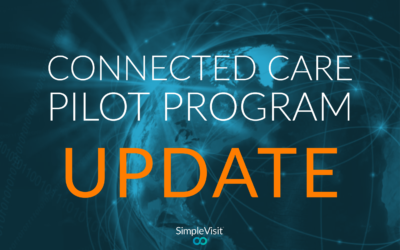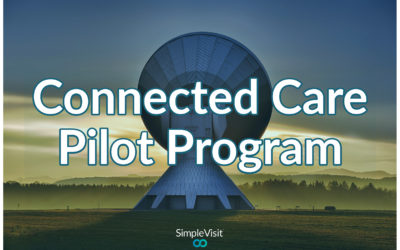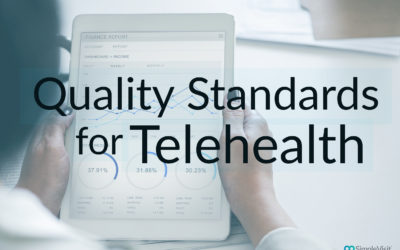
The Perks of Being A Telemedicine Provider
Medical practices around the country are faced with rising trends in telemedicine. This transformation in care now forces providers to consider whether telemedicine really does yield enough benefit to pivot from years of conventional practice?
A collective of positive reviews from doctors using telemedicine has increased greatly within the past few years – read Alliance for Connected Care’s “Another Unstoppable Year for Telehealth”. We often hear quotes like this one from a local tele-psychiatry provider, “Telemedicine is amazing! It makes things so much easier as a provider.” And it is this idea of an easy practice that seems to appeal to providers now turning to telemedicine as an alternative to conventional practice.
Providers and patients are enjoying the perks of telemedicine including expanded access to care, increased patient engagement, with reduced waiting periods and visit frequency.
Access to Care
When looking at offering a telehealth solution perhaps the biggest perk that stands out is the increased access and flexibility it adds to the care experience. Conventional care requires that a provider and patient be in the same place at the same time. Due to physician shortages and specifically specialist shortages in select geographic areas, asking for all parties to be in the same place is often an unrealistic request. Offering video visits allows providers to avoid long and unproductive phone calls with patients and instead see them despite geographic limitations. Whether it is going to college or a move across the state, there is no reason that patients should be forced to leave their primary care provider just because they are no longer within reasonable driving distance.
Providers have reported savings on office overhead and increased time with family as a massive benefit of being able to see patients outside the office. The flexibility of running a virtual practice helps physician’s participate in the trend of working from home that many of their colleagues have enjoyed for years. With the increased rate of physician burnout in recent years, this improved work flexibility might be the perfect cure for those providers looking to spend less time at the office working.
Patient Engagement
One of the most surprising benefits of telemedicine is the increased engagement it adds to the care experience. Many providers fear technology will create a disconnect with their patients, yet practices are finding practical ways to increase engagement and communication. Outside of a remote care option, patients might be required to miss work, drive to a care facility, then wait for an unknown amount of time before seeing a provider who will likely spend more time looking at a laptop than actually engaging with the patient.
The patient experience with a telemedicine provider, on the other hand, removes much of the unwanted barriers to care, allowing the experience to be simplified by technology. Patients often rate their telemedicine experiences higher than the in personal alternative as they feel empowered to see the provider on their time, when and where they want. They are also typically given access to an online queue and forms so that they can expedite and avoid the dreadful waiting room process. This matters for providers as improved patient satisfaction means better patient retention. The improved experience is not limited to the patient. Providers using telemedicine will feel less rushed as video technology helps to manage the flow of patients and reduced missed appointments and delays.
Reduced Waiting Periods
The last perk we will highlight is the efficiency that telemedicine helps generate in a practice. It is well documented that through video visits providers can help reduce their wait times by having less missed appointments and shorter visits. Patients are much less likely to miss a telemedicine visit because of the aforementioned flexibility of the visit. Allowing patients to see their doctor on their smartphone or laptop leads to a reduction of missed appointments and late arrivals as patients need to allot less time to getting in front of their provider. This reduction in missed appointments and delays help to keep doctors on schedule so that they will have more time with patients. It has also been noted that the average length of a video visit is shorter when compared to it’s in office equivalent. Whether this is due to the technological innovation or the nature of video visits is still unknown, but increased patient satisfaction with decrease visit time is certainly a win-win for providers.
Medical practices around the country are faced with rising trends in telemedicine. This transformation in care now forces providers to consider whether telemedicine really does yield enough benefit to pivot from years of conventional practice?
SimpleVisit™ allows healthcare providers to deliver secure, branded care to patients over any device using Apple’s FaceTime, Google Hangouts, or Microsoft Skype. This service utilizes patented technology to connect healthcare providers and patients over common video communication applications. Call (877) 83-VISIT or email info@simplevisit.com to learn more.
About SimpleVisit
SimpleVisit is a video service which allows patients and providers to connect over the video platform of their choice. With SimpleVisit providers are able to deliver on-demand visits to patients over any device or platform they have available to them. For more information on SimpleVisit and on how we are enabling providers to host virtual visits check out www.SimpleVisit.com
Connected Care Pilot Program Update
Allie Clark | July 12, 2019 | Telemedicine News, Access to Care, Rural Healthcare Telehealth has the potential to be a game-changer in the lives of low-income and rural Americans, for whom access to care is at a crisis level. Unfortunately, accessing the...
Connected Care Pilot Program
On July 11, 2018, the Commissioner of the Federal Communications Commission (FCC) announced that the FCC would soon enact a $100 million program aiming to bring access to telehealth to rural and low-income areas. On August 2nd and 3rd it was adopted and released,...
How Quality Standards will be Measured for Telehealth
At a recent Maryland MGMA event I sat in on an intriguing lecture entitled “The Future of Big Data in MIPS, APMs and MACRA in Maryland”. I was overwhelmed by the plethora of acronyms, statistics, regulations, and comparisons. It was easy to get lost in that sea of...



